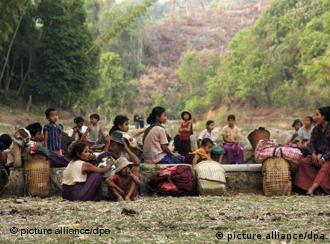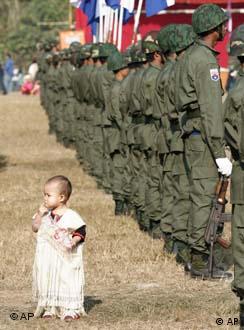对中国提出批评
随后德国文化部长诺伊曼(Bernd Neumann)和柏林市长沃维莱特(Klaus Wowereit)分别致词。诺伊曼在他的开幕式致词中再一次重申了柏林电影节对世界各地人民对政治权利诉求的重视。他不仅赞扬了一年前埃及人民通过大规 模示威游行推翻了前埃及总统穆巴拉克,更对中国政府对艺术家的创作自由的打压提出了严厉的批评。他说,本届电影节将上映独立纪录片制作人陈爱丽 (Alison Klayman)拍摄的关于中国艺术家艾未未的纪录片《艾未未:never sorry》,这不仅是正确的,也是重要的。

德国文化部长诺伊曼
他还表示,今年是德国的"中国文化年",1500名中国艺术家的作品将在今年与德国观众见面,中德之间的文化和经济交流会越来越密切,但是德国不能 因为巨大的经济利益,对中国政府践踏人权和艺术家权利的行为缄默不言,虽然"我们目前无法对他们直接施以援手",但是德国应该对中国政府镇压诸如艺术家艾 未未,还有诺贝尔和平奖得主刘晓波的行为公开提出批评。
作者:见山
歐美需求不振,台灣出口2年來首度下滑
亞洲、歐洲、美國需求下滑,台灣出口也自09年10月以來首度呈現下滑;財政部於2月7日表示,今年1月商品出口較去年同期下滑了 16.8%,去年12月的成長率則為0.6%。對最大出口市場中國(含香港)的出貨量較去年同期大減25.9%,對日本銷售減少16.3%。對歐洲及美國 的出貨量雙雙下跌約11%,對東南亞國協則減少10.1%。
今年農曆新年落在1月,去年則為2月,由於農曆新年會影響出口活動,最新的數據自然會受到嚴重扭曲,The Economist 亦預期2月的表現將有所回升。不過,經濟數據所顯示的趨勢仍舊支持The Economist 的看法,亦即出口在歷經2010年快速成長、11年成長走弱之後,今年將呈現停滯。
這反映了美國需求不振、歐元區進入衰退,促使OECD已發展市場對台灣出口的需求走弱,亞洲的需求相當健全,但只能填補部分缺口。The Economist 預測,2012年商品出口將成長1.4%(以國際收支平衡估算),較11年11.4%以及10年34.6%減緩。(黃維德譯)
©The Economist Newspaper Limited 2012
1月用电量下降7.5%,野村认为这反映出工业产出大幅下降
Coffee v tea: Is India falling for the cappuccino?

Cannot play media. You do not have the correct version of the flash player. Download the correct version
Rajini Vaidyanathan and Shilpa Kannan on whether the growing popularity of coffee in India will take over the love for traditional tea
Starbucks has announced it is to open its first outlet in India by the end of the year, marking the international chain's first venture into the country. India has been a nation of tea drinkers for centuries, but in the past decade coffee has been on the rise. Is the chai losing out to the cappuccino?
At a small stand next to a photocopying shop, Ram Shankar Patidar is heating milk on a single gas stove. The focus of his attention is a stainless steel container, which is bubbling and rattling as he adds tea leaves, water, spices, and freshly crushed ginger.
Patidar has been making and selling Indian tea, better known as chai, for more than 40 years.
He has occupied the same spot in a busy suburban business district in Mumbai for more than a decade, but for the past eight weeks there's been a new addition to the street.
Directly opposite his stand is a branch of India's largest coffee chain, Cafe Coffee Day, abbreviated by many to CCD.
"They don't make much of a difference to me," he says as he ladles the mixture through muslin into a small glass. "Those who can afford to go to CCD would anyway. It's much more expensive than what I sell."
How to make chai

- Heat 350ml water and 100ml of milk with four black peppercorns, 10 lightly crushed green cardamom pods, a good pinch of green fennel seeds, a small piece of cinnamon stick and a teaspoon of peeled and chopped fresh ginger
- Boil gently for 15 minutes, until reduced to a large cupful
- Add a teabag and brew for a minute, or longer
- Strain into a cup and add sugar or salt to taste
For centuries, the humble chai wallah has been part of the country's fabric, but in the past decade, the makeshift roadside stalls have begun facing competition from Western-style coffee chains.
The first Cafe Coffee Day opened in 1996, marking the beginning of a change in Indian tastes and habits. The CCD chain is now opening a branch almost every week, and has more than 1,200 stores across India. It's been joined by other chains, including Barista Lavazza and Costa Coffee.
Like their Western counterparts, India's coffee shops serve a range of coffees from mochas to lattes, iced coffees to espressos. But their appeal is greater than their beverages.
"I go to coffee shops just to hang out," says Zain Waris, a student in Mumbai. "In India, we don't have many places to hang out, and these chains don't have any objections to us spending hours and hours sitting there."
India's coffee culture has changed the way young Indians socialise.
In a country where there is a limited bar culture, and where drinking alcohol is still frowned upon in many circles, it has provided an acceptable and safe outlet for people, particularly young Indians, to share a drink.
What Indians drank in 2010
- Tea: 837,000 tonnes
- Coffee: 108,000 tonnes
It is common to see large groups of teenagers congregating at coffee shops later into the evening. Some branches provide guitars for jam sessions.
It has also helped facilitate the country's growing dating culture - having a girlfriend or boyfriend at a young age is frowned upon by many, so secret trysts at a coffee shop have become the norm for many young Indians, and serve as a suitable bolthole away from the prying eyes of parents.
For 22-year-old graduate Ronak Mehta it's the perfect place to discuss college work. "It's much better than sitting on a bench, where you'd drink tea," he says.
With more than half of the country's population under 25, and a rising middle-class that is well aware of Western trends, there's little wonder Indian coffee consumption has doubled in the past 15 years since the first cafes were opened.
 Dashrat Rathod (right): People like me just drink up and go
Dashrat Rathod (right): People like me just drink up and go "Earlier you had generally had coffee at home or the office. These new businesses have made the cafe culture more accessible, thus attracting a young crowd who could hang out in a relaxed atmosphere," says Anil Dharker, a leading columnist and social commentator in India.
Even before the coffee chain revolution, coffee had a strong presence in South Indian homes. Typical South Indian coffee, or kapi, is a made with boiled milk and plenty of sugar, and is served in stainless steel tumblers. Many families drink more kapi than tea.
"We used to have coffee at home every morning," says Dashrat Rathod, an engineer from Karnataka. "I've never been to a coffee shop, people like me don't have the time to spend there, we drink up and go."
Rathod might have a taste for coffee but isn't prepared to pay for a serving in a new style coffee shop. The price of tea or coffee from a roadside stand is usually in the order of five rupees (about 10 US cents, or 6p), compared with around 80 rupees ($1.60, £1) upwards for a cappuccino or equivalent. This price barrier makes the coffee shop culture mainly a preserve of the upper middle classes in India.
The entrance of Starbucks, an American chain, into the Indian coffee market follows other international coffee brands such as Costa, Gloria Jeans, and Lavazza which has bought into Indian chain Barista. Like other Western brands, these tend to be seen as aspirational to many young Indians, says Anil Dharker.
 Cafe Coffee Day or CCD began the coffee invasion in 1996
Cafe Coffee Day or CCD began the coffee invasion in 1996 Even so, he says, Starbucks and others may have to work to accommodate Indian tastes.
"What actually happens is that a foreign player sees a commercial opportunity and enters a new market. And then adapts. This is particularly so of the Indian market. Just take a look at McDonalds, it's a completely different entity here," says Dharker.
Starbucks globally does already serve it's own brand of "Indian" tea, the chai tea latte, but it's a world away from the unique taste of authentic Indian chai. It remains to be seen whether this will be an offering in the Indian stores.
But despite the coffee invasion, tea remains popular, with consumption rising from 562,000 tonnes annually to 837,000 tonnes in the last 15 years.
"More people are drinking tea because they like it, and because the population is rising," says Surjit Patra from the Indian Tea Association.
The average Indian drinks now around 250 cups of tea per year. This is quite a low figure by international standards - in Ireland, for example, the average citizen drinks 1,000 cups per year - suggesting there could be room for further expansion.
"We have found lots of health benefits in tea," Mr Patra says, unsurprisingly extolling the virtues of the drink he promotes. "There's no other beverage like it. Not even coffee."
Additional reporting by Aarti Thobhani.
缅甸中央集权出现松动迹象?
缅甸是个多民族国家。除了占人口多数的缅族,被缅甸官方承认的民族多达130多个。缅甸军政府以中央集权的方式在领导这个国家。在这一点上总统登盛虽然态度也很坚决,但是最近隐约出现了一些渐变的光亮。

缅甸克伦族
克伦族、克钦族、掸族、孟族等民族是缅甸国内最重要的少数民族。这几个少数民族都拥有自己的军队,几十年来他们和政府军之间不断发生交火。最近几个月来的 谈判似乎带来一丝和平曙光。缅甸南部的克伦族同中央政府签署了停战协定。缅甸政府的一位公职人员说:“内比都政府和克伦族之间此前没有签署过停战协定。这 是63年来签订的第一份停战协定,这对整个国家来说是一个巨大的突破。”
大约一周前,克伦族庆祝了他们谋求独立的63周年纪念日,同时撤回了最前线的战士。内尔达是克伦族军队的指挥官。他说:“如果现在举行和谈,我们感到很高兴。我们想坐在谈判桌旁继续协商。但如果我们的愿望被驳回的话,那我们就需要继续为我们的权利而战了。”

克伦族的军队
几十年来克伦族一直在争取民主自治和文化自决。克伦族的首领卡普索博心中的疑虑仍然很大。“我们现在和政府之间签署了停战协定,但是我们必须保持谨慎,对政府我们不能百分之百地信任。”
但是几天前克伦族民族联盟的秘书长却宣布,停战协定并未签订,双方仍在谈判之中。为什么会出现这种矛盾的现象?独立周刊《声音》的编辑则亚楚说,因为克伦族人对政府缺少信任。
“达成停火协定是容易的,但是在停火之后还会持续一段充满不信任和紧张气氛的时期。为此现在必须加强的是信任建设。停战只是一个开端,双方现在需要的是对对方的信任,而且特别需要的是时间。”
克钦族是缅甸北部人口最多的少数民族。这个族还没有和政府间达成停火协定,而且停战谈判还只是停留在初级阶段。政府方面的一名负责起草谈判草案的代表说,为了推动整个和平进程,政府和克钦族之间都要做出努力。
反对派也认同这种看法。昂山素季所在的全国民主阵线强调说,从长远看应该再出台一部新的联邦宪法,依照新宪法,所有族群都应该享有平等的权利和自治的权利。
沒有留言:
張貼留言